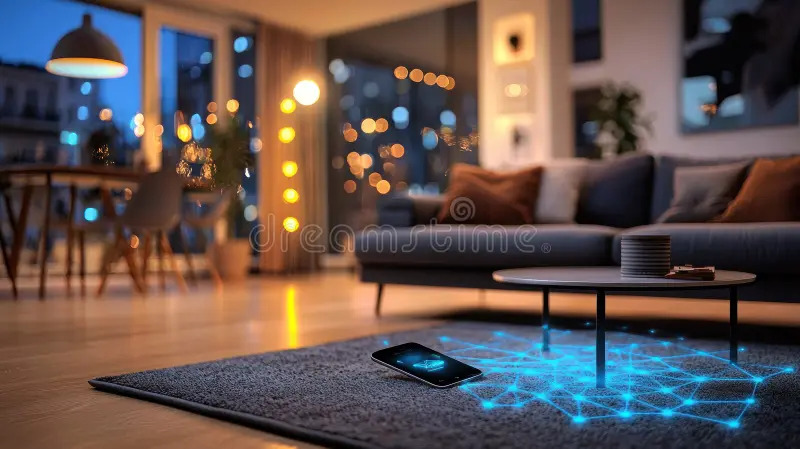Evenings put pressure on the home internet. A smart TV pulls episodes, while phones sync photos and laptops update. The result is a fragile stream where a single hiccup ruins the mood. Living-room apps win loyalty by feeling steady in imperfect conditions. Caching is the quiet hero that makes this possible. The right assets arrive early. Screens draw instantly. Networks breathe instead of gasping.
This playbook treats the TV as a 10-foot surface with shared bandwidth and short attention. The aim is simple. Keep motion smooth, copy calm, and bite a few. When an app behaves politely on busy weeknights, families return to it without thinking.
Why Living-Room Networks Stall – and What Apps Can Do
Shared connections stall for boring reasons. Router placement favors the hallway, not the sofa. Neighbors crowd the same channels. Devices talk in the background when nobody is watching. Event-driven apps suffer first because they need quick, predictable responses. A straightforward way to stage content and reduce mid-session fetches is to preload the next actions and ship only what the big screen will actually show. For a neutral, news-style reference on scheduling and content pacing in a live sports context, start with this website. Use it to align language around bursts, highlights, and quiet windows before deciding what to cache.
A steady app does fewer things in smarter places. It grabs predictable assets during calm minutes, holds them lightly, and never blocks the UI while waiting for perfection. The technique is simple to describe and powerful in practice.
Cache With Intent – What To Store Before Prime Time
Use a short checklist to choose cache targets that pay off without bloat.
- Hero artwork at TV resolution – right size for the slot, so images fade in without layout shifts.
- Critical fonts and icon sets – one pass loads the look and keeps text crisp at 10 feet (3.05 m).
- The next lane of cards – prefetch one row ahead to make focus hops feel instant.
- Fallback clips or stills – tiny preview assets play while longer versions load.
- Route shells and skeletons – let navigation open immediately while data streams.
- Localized copy bundles – language switches should not hit the network at 9 p.m.
- Recent state snapshots – fast resume after a brief dropout preserves trust.
These items turn the living room into a low-latency surface even when the ISP is not cooperating.
Lightweight Delivery Patterns – Less Drama, More Frames
Big screens magnify hesitation. Delivery must be quiet and predictable. Ship images in modern formats that decode softly. Trim transparent edges, so the GPU moves less. Reserve layout space, so content does not shove controls when it arrives. Split bundles by route and by shelf so browsing comedy does not load every category. Stream metadata first, then media. The UI can render titles and durations immediately, while thumbnails trickle in.
Batch requests during idle moments. A news hub that expects a surge at 8 p.m. can fetch the first wave at 7:55. Keep cache invalidation gentle. Rotate freshness behind the scenes rather than deleting everything at once. If bandwidth dips, fall back to a “lite” mode that lowers animation density while keeping focus rings and captions intact. Viewers forgive lower fidelity when the interface stays steady.
UI Signals That Keep Calm – Design for the 10-Foot Mindset
Perceived performance starts with tone. Focus rings must be obvious and stable. The highlight should never hide under toasts or modals. Motion needs consistent durations and linear-in-out easing, so the eye learns the rhythm. Bounce effects look playful on phones. From the sofa, they read as jitter. Keep them out of core navigation.
Copy earns its keep by reducing doubt. Buttons tell the truth in short verbs – Play, Continue, Exit. Status lines use plain words – Loading, Saved, Offline. Colors guide rather than push. Warm neutrals handle ordinary states. Accents appear only on primary actions. Subtitles sit one tap away, with size presets for mixed-age households. Every detail says the same thing – the app respects the room and the hour.
Nightly Hygiene That Pays Back Tomorrow
Quiet maintenance keeps caches useful without hogging the line. Schedule housekeeping for true off-hours. Rotate artwork and purge stale slots in small batches. Cap cache size with a visible control, so users can clear space quickly. Expose a “Reduce data” toggle that holds thumbnails longer and defers high-bitrate media until the user presses play. When the app wakes, check freshness lazily. Do not block the first screen to rebuild lists that the viewer may not open tonight.
Recovery matters when the connection wobbles. Confirm actions locally with a subtle pressed state. Queue requests and show a tiny “received” tag, so viewers avoid double-taps. Keep skeletons in place during retries so the layout never jumps. A steady surface earns forgiveness when packets take the scenic route.
The Living-Room Standard
The measure of a great TV app is simple – it feels immediate on a mediocre network. Intentional caching, lightweight delivery, and calm design achieve that goal without heroics. Preload what the eye will need next. Never let layout shift. Let motion whisper. Keep maintenance invisible. With those habits, a shared connection stops being the villain of family movie night. Updates land softly. Headlines and highlights appear on time. The experience feels effortless because the hard work happened earlier – exactly where good caching belongs.

